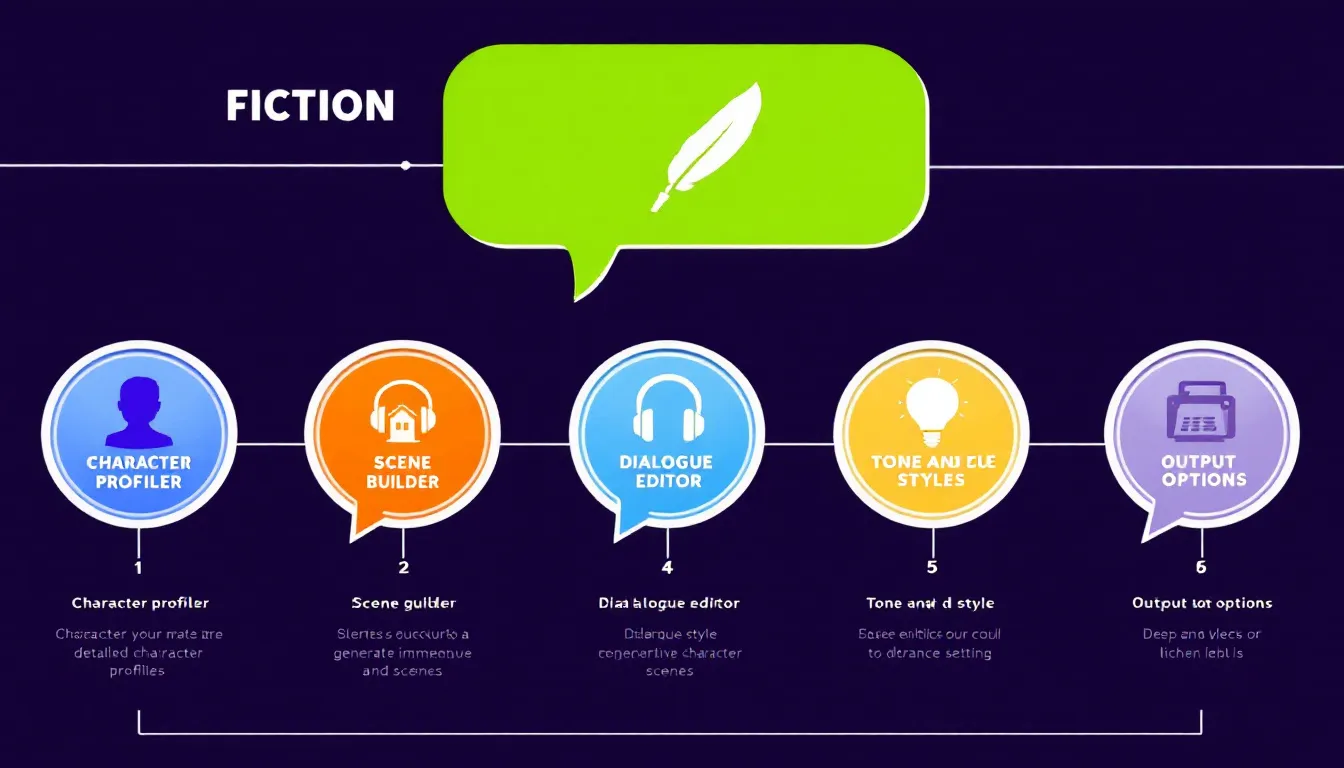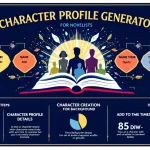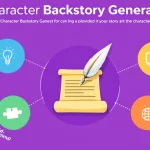Dialogue Generator
Is this tool helpful?
How to Use the Dialogue Generator Tool Effectively
This Dialogue Generator Tool helps you craft authentic and engaging conversations between your characters. Follow these steps to get the best results:
-
Define Your Characters:
In the “Characters” field, describe each character briefly. Include their name, age, and defining traits to shape their voice. Examples:
- Lucas: A sharp-tongued teenager with a rebellious streak
- Mrs. Reed: A kind-hearted librarian nearing retirement
-
Set the Scene:
Describe the environment where the dialogue unfolds, adding details that influence the tone and mood. Examples:
- An old, creaky attic filled with dust and forgotten memorabilia
- A lively marketplace bustling with vendors and chatter on a warm afternoon
-
Specify Emotions (Optional):
If you want to highlight key feelings or motivations, list them in the “Emotions” field to guide the dialogue’s tone. Examples:
- Regret, determination, subtle humor
- Suspicion, relief, guarded optimism
-
Highlight a Plot Point (Optional):
Enter a critical plot element or conflict that the dialogue should address. Examples:
- Confrontation over a hidden family secret
- Negotiating peace between rival factions
-
Generate the Dialogue:
Click “Generate Dialogue” to create a conversation tailored to the inputs you provided.
-
Review and Refine:
Examine the output carefully. Use the “Copy to Clipboard” feature to transfer the dialogue to your writing software for further editing and to fit your story perfectly.
Introducing the Dialogue Generator Tool: Craft Natural Conversations Easily
The Dialogue Generator Tool helps fiction writers quickly create authentic and engaging character conversations. It takes your input about characters, settings, emotions, and plot points to produce realistic dialogue that fits your story’s needs.
By focusing on your characters’ personalities and the scene’s atmosphere, this tool makes it easier to overcome writer’s block and build dialogues that sound true to your narrative voice. It provides a foundation you can customize, saving time and enriching your storytelling.
Key Benefits of the Dialogue Generator Tool
- Character-specific voices: Generates dialogue reflecting each character’s unique traits and backgrounds.
- Scene-aware conversations: Embeds environment details to create immersive interactions.
- Emotionally driven exchanges: Infuses dialogue with the feelings and motivations you specify.
- Plot-focused dialogue: Helps advance your story by addressing significant conflicts or events.
- Easy customization: Allows you to edit and tailor generated dialogue to fit your style and needs.
Using this tool, you’ll write dialogue that sounds natural and compelling, enhancing your story’s depth, pace, and emotional resonance.
Practical Applications: How Writers Use the Dialogue Generator Tool
This tool serves writers across genres and formats by helping generate dialogue that fits a variety of storytelling needs.
Novel Writing
- Create introductory conversations that establish relationships and character traits.
- Write key dialogue that reveals motives or propels the plot.
- Develop subtle exchanges for character development or foreshadowing.
Screenwriting
- Build sharp, fast-paced dialogue suited for on-screen scenes.
- Compose monologues that underline characters’ emotions and backgrounds.
- Generate realistic group interactions for ensemble casts.
Short Story and Flash Fiction
- Craft concise, impactful dialogue that moves the story quickly.
- Create emotionally resonant lines that leave a lasting impression.
- Use dialogue to efficiently establish character and conflict.
Playwriting and Stage Drama
- Develop speech patterns that reflect character and social context.
- Write exchanges charged with emotion to heighten dramatic tension.
- Ensure dialogue pushes the play’s narrative and character arcs.
How the Dialogue Generator Tool Addresses Writing Challenges
Creating Distinct and Authentic Character Voices
Each character’s dialogue reflects their age, background, and personality. For example, inputting:
“Maya: a witty barista in her 20s with a quick sense of humor”
will generate lines that match Maya’s youthful, conversational tone and playful nature, making your characters believable and lively.
Integrating the Setting into Dialogue
The tool uses your scene descriptions to weave environmental details into conversations, enriching the atmosphere. For instance, if you describe:
“A quiet, snow-covered mountain cabin with a crackling fireplace”
the dialogue may include references to the cold, warmth, or isolation that reflect this setting.
Conveying Emotions and Subtext Through Conversation
By specifying emotional tones like “anxiety, hope, and frustration,” the tool generates dialogue layered with subtext and non-verbal cues, helping you show rather than tell your characters’ feelings.
Driving the Plot Forward with Dialogue
Adding a plot point such as “Election results causing division among friends” guides the tool to create conversations that reflect conflict and tension directly related to the storyline, ensuring each interaction serves your narrative.
Enhance Your Storytelling with the Dialogue Generator Tool
The Dialogue Generator Tool helps you produce dynamic, emotion-rich, and plot-driven conversations effortlessly. It saves time, breaks creative blocks, and strengthens character voices, helping you connect more deeply with your readers. Use it as a practical aid that fits seamlessly into your writing process.
Important Disclaimer
The calculations, results, and content provided by our tools are not guaranteed to be accurate, complete, or reliable. Users are responsible for verifying and interpreting the results. Our content and tools may contain errors, biases, or inconsistencies. Do not enter personal data, sensitive information, or personally identifiable information in our web forms or tools. Such data entry violates our terms of service and may result in unauthorized disclosure to third parties. We reserve the right to save inputs and outputs from our tools for the purposes of error debugging, bias identification, and performance improvement. External companies providing AI models used in our tools may also save and process data in accordance with their own policies. By using our tools, you consent to this data collection and processing. We reserve the right to limit the usage of our tools based on current usability factors.







